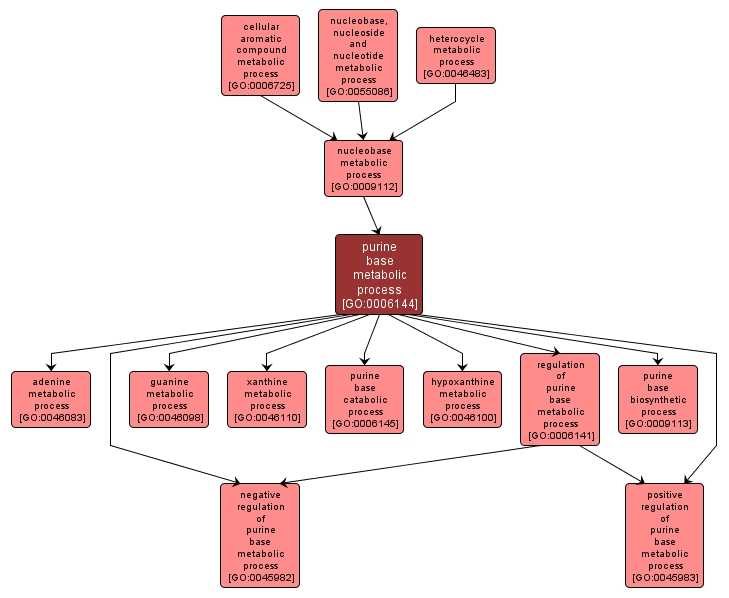GO TERM SUMMARY
|
| Name: |
purine base metabolic process |
| Acc: |
GO:0006144 |
| Aspect: |
Biological Process |
| Desc: |
The chemical reactions and pathways involving purine bases, one of the two classes of nitrogen-containing ring compounds found in DNA and RNA, which include adenine and guanine. |
Synonyms:
- purine metabolism
- purine base metabolism
- purine metabolic process
|
|

|
INTERACTIVE GO GRAPH
|














